This morning, November 25, continuing the 10th Session Program of the 15th National Assembly, discussing at Group 6 (including the National Assembly Delegation of Dong Nai, Lang Son provinces and Hue City) on the investment policy of the National Target Program on health care, population and development for the period 2026-2035, the delegates emphasized: it is necessary to adjust the targets and monitoring mechanism of the National Target Program on health care , population and development 2026-2035 for each region, combining digital technology and smart medical stations, to ensure feasibility, efficiency and serve the interests of the people.
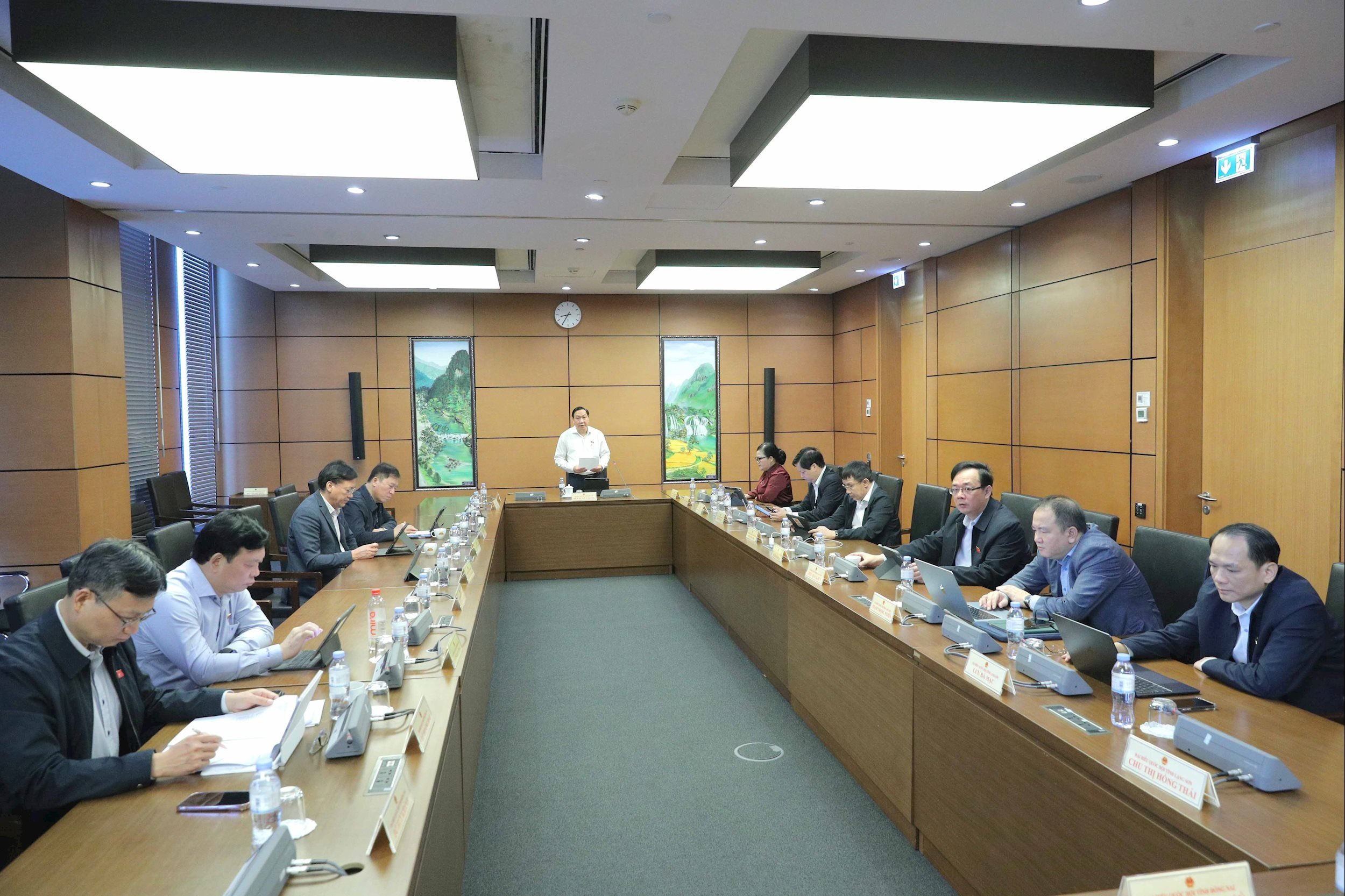
Scene of Group 6 meeting on the morning of November 25. Photo: Ho Long
Targets need to be realistic, solutions must be specific
Expressing high agreement with the necessity of promulgating the Program, National Assembly Delegate Chu Thi Hong Thai ( Lang Son ) pointed out that in the practical implementation of target programs in localities, especially in ethnic minority, mountainous, border and island areas, there are still many issues that need to be further improved to ensure feasibility when applied in life.
First of all, regarding the system of indicators, delegates said that this is the basis for evaluating the effectiveness of the Program, but some targets are being set too high compared to the capacity of disadvantaged localities. Typically, the target of 100% of people having electronic health records by 2030. According to delegates, this target is not close to the actual situation when many mountainous communes do not have stable mobile signals, people are not familiar with using digital applications, and technology infrastructure is still lacking. If "a common" 100% mark is applied to all localities, the risk of chasing achievements and doing things for show is very high.

National Assembly Delegate Chu Thi Hong Thai (Lang Son) speaks. Photo: Ho Long
Therefore, delegates proposed to design targets by region; in the period 2026 - 2030, especially difficult areas should only set a target of 60 - 80%, and at the same time develop an offline version of electronic health records with support for ethnic languages.
Regarding the target of 100% of commune health stations implementing non-communicable disease management, delegates also said that it needs to be reconsidered because many stations in mountainous areas only have 3-5 staff, lack doctors, and lack basic equipment. The requirement to fully deploy professional techniques is beyond the current capacity. Delegates proposed to change the target from "100% of stations" to "meet minimum capacity standards", at the same time, add investment in on-site testing equipment and expand the form of remote consultation and examination to support the grassroots level.
For prenatal and newborn screening targets, the 90–95% level is considered difficult to achieve in mountainous areas where people still face many barriers in accessing services, culture and language. Delegates proposed designing two levels of targets, including a national level and a minimum level specifically for disadvantaged areas, and promptly deploying a model of mobile sampling teams and regional testing centers to ensure accessibility.
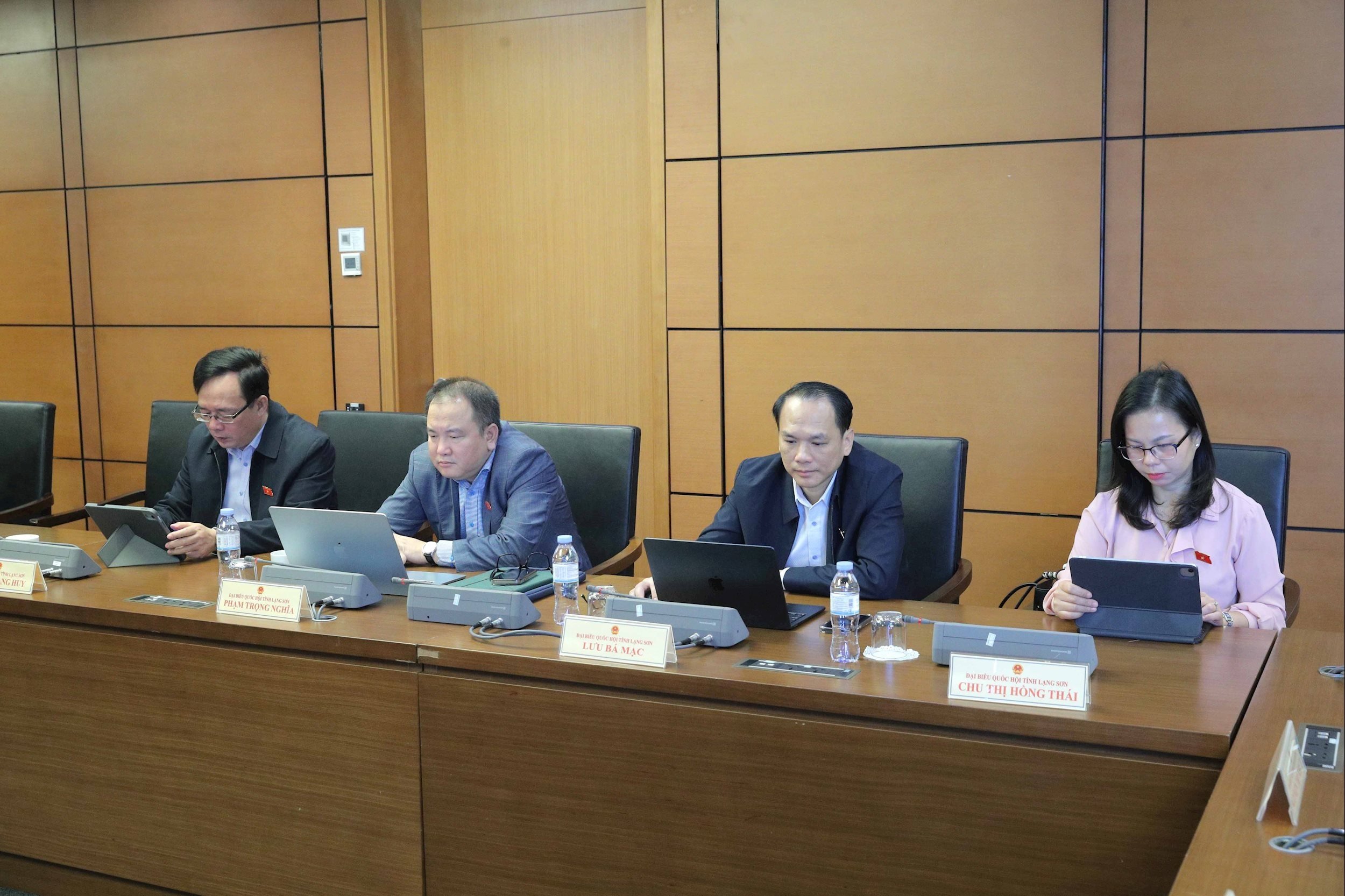
The National Assembly Delegation of Lang Son province at the Group 6 meeting on the morning of November 25. Photo: Ho Long
Discussing the content of the Program, National Assembly Deputy Chu Thi Hong Thai said that although the draft correctly pointed out existing challenges such as degraded primary health care, limited preventive health capacity, or rapid birth rate decline, many solutions are still only at the general direction. The specific factors of ethnic minority and mountainous areas - the areas most affected - have not been fully reflected in the policy system.
In the solution group, the delegate said that medical human resources are the "biggest bottleneck" determining the success of the Program. The Government 's report also acknowledged the shortage of primary health care human resources that has lasted for many years, but the solutions proposed in the Draft are still general and lack breakthroughs. Therefore, the delegate proposed to study and implement a project for young doctors to volunteer to work for 5 years in particularly difficult communes; at the same time, apply a training mechanism associated with a commitment to long-term service in difficult areas. If the human resources problem is not fundamentally resolved, many of the Program's targets, despite being reasonably designed, will still be difficult to implement.

National Assembly Delegate Nguyen Thi Nhu Y (Dong Nai) speaks. Photo: Ho Long
Agreeing with the above opinion, National Assembly Delegate Nguyen Thi Nhu Y (Dong Nai) also said that the implementation of the National Target Program on People's Health Care for the period 2026 - 2035 is facing many systemic challenges, starting from the requirement to adjust the program to suit the management model of two-level local governments.
Delegates said that the biggest "bottleneck" at present lies in infrastructure and medical equipment (Project 1). Many medical stations after the merger are redundant, but not all facilities can convert their functions to meet the new standards, especially according to the regulations in Circular 43.
"The implementation of Circular 43 in recent times has shown a series of problems regarding human resources, facilities and operating conditions of commune and ward health stations. The grassroots health sector is seriously lacking doctors: while the target is 5-7 doctors/station, in reality many places only have 1-3 people. In that context, some of the program's targets are considered too high and unfeasible. For example, the target of 100% of people having electronic health records by 2030 is considered very difficult to achieve, especially when there have been lessons learned from the previous failure of electronic labor records" - the delegate emphasized.

Delegation of National Assembly deputies of Dong Nai province at Group 6 meeting. Photo: Ho Long
In addition, the new program addresses the task of reducing stunting malnutrition but does not have specific solutions to deal with overweight and obesity in children - a problem that is increasing rapidly in urban areas and is a global concern. Therefore, it is necessary to review the system of indicators and tasks to ensure practicality and feasibility in the implementation process.
Many indicators are not clearly defined.
Emphasizing that the investment policy of the National Target Program on health care, population and development for the 2026-2035 period demonstrates the determination to innovate, National Assembly Deputy Nguyen Thi Suu (Hue City) said that the draft still has many contents that need to be further clarified to ensure feasibility, transparency and effectiveness in implementation.

National Assembly Delegate Nguyen Thi Suu (Hue City) speaks. Photo: Ho Long
Regarding the feasibility and measurability of specific targets, delegate Nguyen Thi Suu pointed out: many targets in the draft have not been clearly defined and lack a scientific basis for measurement. This can easily lead to the risk of subjectivity in assessment, difficulty in controlling progress and difficulty in timely adjustment. For example, the target of "crude birth rate increase by 0.5%" has no scientific basis for the cause and method of achievement; the sex ratio at birth falling below 109 boys/100 girls also lacks specific intervention measures; or the concept of "most common congenital diseases" does not clearly list priority diseases.
According to delegates, the lack of qualitative definitions in quantitative targets will reduce transparency and control of management agencies. Therefore, it is necessary to specifically list priority congenital diseases (such as Down syndrome, cerebral palsy, congenital heart disease, etc.), clearly identify factors affecting birth rates and sex ratios at birth, and develop intermediate assessment indicators such as the rate of people participating in vaccination or accessing primary health services.
Regarding the mechanism for handling violations and ensuring discipline, delegate Nguyen Thi Suu noted that the draft only mentions “monitoring and evaluating”, but lacks provisions on handling violations, binding responsibilities or deterrent measures against waste, negativity or law violations. The lack of this mechanism can easily lead to delays, lack of responsibility or abuse of public resources. Accordingly, it is proposed to assign specific tasks to the Government Inspectorate and relevant agencies, clearly specifying handling forms such as inspection, disciplinary action, recovery of improperly used capital, and at the same time attaching personal responsibility to specific targets and tasks.
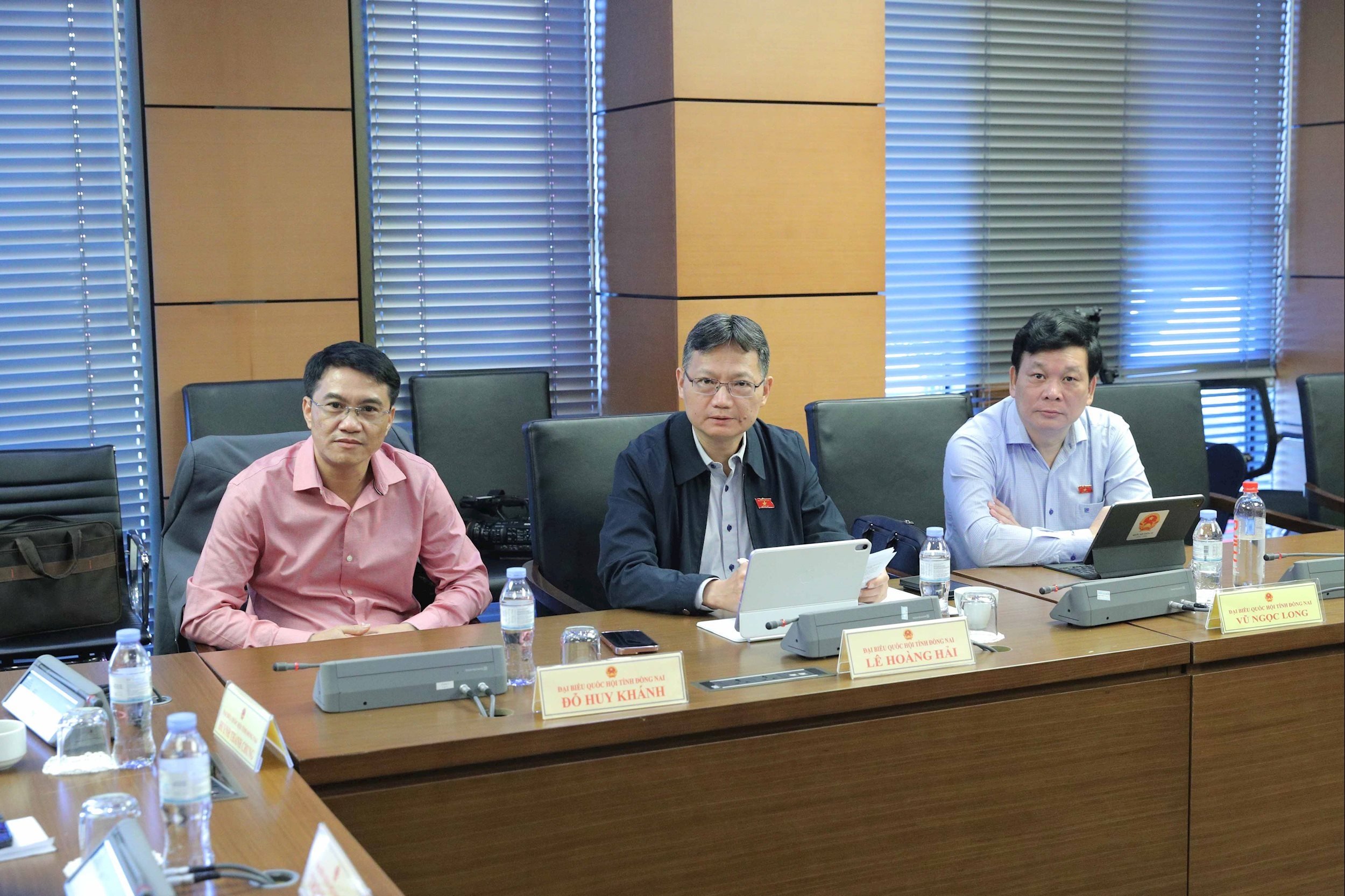
National Assembly deputies of Dong Nai province at the morning meeting of November 25. Photo: Ho Long
The National Assembly deputies also noted the lack of a mechanism for risk assessment and flexible adjustment. In the context of implementing large investment programs, the lack of a mechanism for contingency or flexible adjustment in the face of events such as epidemics, natural disasters or inflation will make the program rigid and difficult to adapt to reality. Therefore, it is proposed that the Ministry of Health develop a plan for risk assessment and response measures, and at the same time, supplement regulations on adjusting targets after having periodic assessment reports.
In addition, delegate Nguyen Thi Suu also pointed out that the lack of inter-sectoral coordination and supervision mechanism is a point that needs to be overcome. The national target program requires synchronous connection between ministries, branches and localities. The lack of this mechanism will lead to lack of synchronization and reduced implementation efficiency. Therefore, it is necessary to establish an inter-sectoral steering committee headed by the Prime Minister, with representatives of relevant ministries, branches and localities, responsible for coordination, supervision, periodic reporting and building a mechanism for synchronous implementation coordination.
"Completing criteria, measurement mechanisms, handling violations, risk assessment and inter-sectoral coordination is a mandatory requirement for the National Target Programs to promote real effectiveness, serve the people's interests and ensure transparent and effective use of public resources."

National Assembly Delegate Nguyen Hai Nam (Hue City) speaks. Photo: Ho Long
National Assembly Deputy Nguyen Hai Nam (Hue City) also emphasized: The program sets three major goals: improving physical health, mental health, and social and environmental health. According to the delegate, some specific quantitative targets proposed include reducing the mortality rate due to non-communicable diseases (NCDs) by 20% by 2035, covering 100% of personal electronic health records, and reducing household costs related to chronic diseases by 30%.
In addition to quantitative indicators, delegates said that the program needs to implement specific solutions. First of all, it is necessary to strengthen digital linkages by applying artificial intelligence in healthcare and developing electronic health records, while at the same time synchronizing with the provisions of the law on artificial intelligence. Next, perfecting the financial mechanism is an important condition, with clear assignment of rights and responsibilities, combining public resources and public-private partnership (PPP) models to improve elderly care services and disease prevention.
Regarding primary health care, delegate Nguyen Hai Nam suggested building smart health stations with core functions; at the same time, he suggested adding the concept of "family vaccination" and standardizing human resources according to population; and implementing a value-based practice health service package.
In addition, the program also needs to focus on elderly care and mental health, including developing the elderly care industry, researching long-term insurance following the Japanese-Korean model, and building local community health centers to screen for depression and anxiety.
Source: https://daibieunhandan.vn/hoan-thien-co-che-va-chi-tieu-de-chuong-trinh-muc-tieu-quoc-gia-ve-y-te-phat-huy-hieu-10397015.html












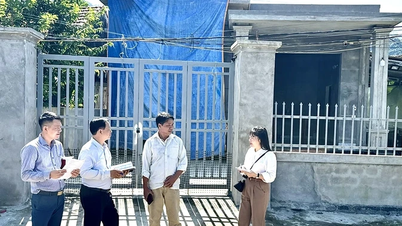












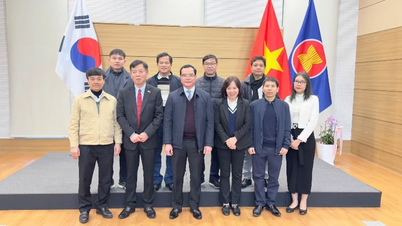


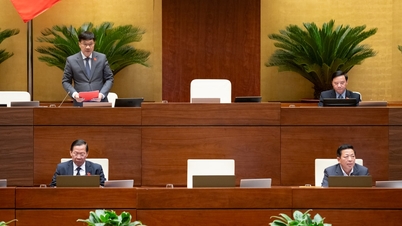





















































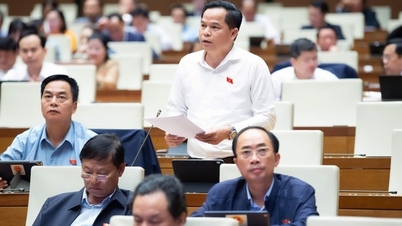


























Comment (0)